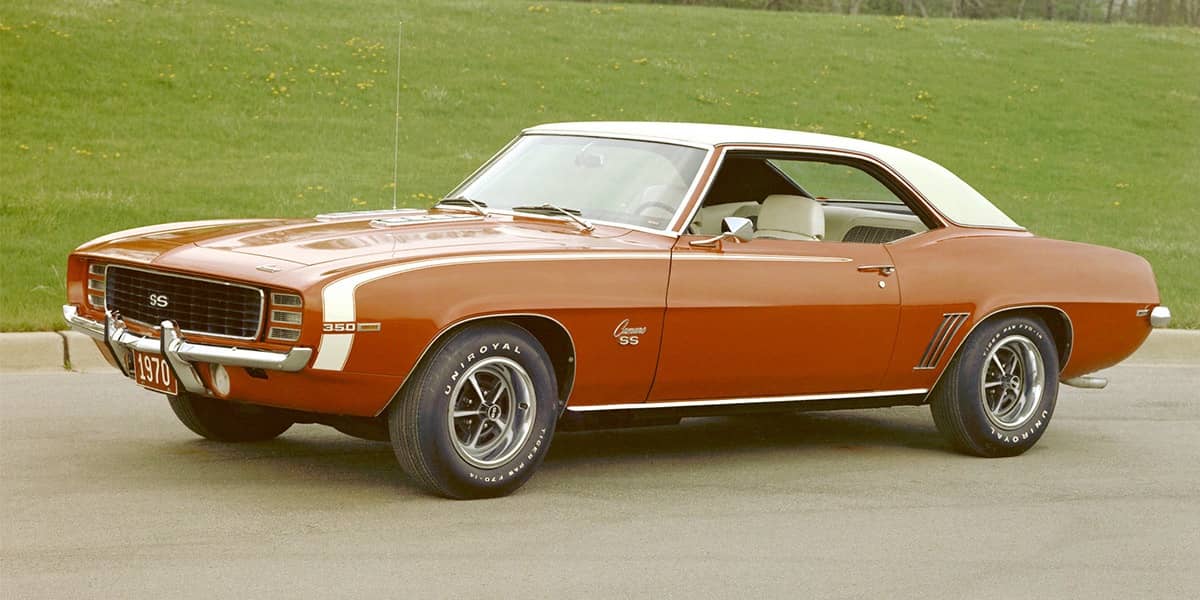In the 1960s, a fierce rivalry akin to Coke-vs-Pepsi unfolded in the US between Ford and Chevrolet. While European and Japanese manufacturers were present, they paled in comparison to the almost cult-like following of these two Detroit heavyweights in the United States. The year 1965 marked a significant moment when Ford launched a major attack on Chevy with the debut of the Mustang. This unexpected move, introducing the innovative concept of a pony car, left the ribbon-emblem manufacturer unprepared. The Mustang’s overwhelming sales success meant Chevrolet had to respond urgently.
The Birth and Evolution of the Chevrolet Camaro
Chevrolet’s answer was the creation of a car that closely mirrored the Mustang. The new model, like the Mustang, was available as a 2+2 coupe or convertible, utilized components from a compact sedan, and offered a choice between a 6-cylinder engine or a V8. Chevrolet made no secret that the Camaro was designed as a direct competitor. When questioned about the meaning behind the name ‘Camaro’, Chevy’s General Manager cheekily responded that it signified “a small vicious animal that eats Mustangs.”
The first-generation (1967-1969) Camaro, while not overtaking the Mustang, was certainly a strong contender. Despite its late introduction, the Camaro impressed with its robust engine options, including the formidable 396 CI big-block V8 delivering 375 BHP and the sportier 302 CI Z/28 small block. Its stunning design, featuring a recessed square grille and headlights, a wide stance, and sleek curves, unmistakably accentuated its sports car heritage.
The Camaro's Journey into the 21st Century
The essence of the Camaro has always been its striking appearance and robust engine. The year 1970 marked the debut of an updated model, characterized by its Ferrari-esque design and powerful V8 engines. This iteration was a more refined and well-conceived version, benefitting from a development process that wasn't rushed. However, over its 11-year production span, regulatory changes took their toll. Emission standards reined in its performance, and obligatory bumper additions detracted from its aesthetics.
With the advent of the 1980s, it was clear that the Camaro needed a transformation, and Chevrolet rose to the occasion. The third-generation Camaro was a radical departure, embodying the essence of heavy metal and mullets with its angular, wedge-shaped design and the option of a T-top. Though the engines available weren't as potent as those from a decade earlier, the vehicle compensated with significantly reduced weight, shedding approximately 230 kilograms compared to its predecessor. The entry-level version was equipped with a modest 2.5-liter 4-cylinder Iron Duke engine. At the higher end, the IROC-Z model, despite having a 5.0 or 5.7-liter V8, managed just over 200 horsepower, a consequence of stringent regulatory standards. The Camaro's perennial rival, the Mustang, faced similar challenges during this era.
The fourth generation of the Camaro represented more of an evolution than a revolution. Despite its modern, sleek exterior, the car retained traditional elements like the live rear axle and pushrod engine. The power levels of all engines increased, notably with the introduction of Chevy’s renowned LS1 engine (5.7-liter, 305 BHP). These compact and lightweight small-block V8 engines delivered significant power and became widely recognized, often sparking debate for their frequent use in various car models. Despite the power increase, the Camaro's appeal dwindled in the American market, leading to the cessation of its production in 2002, leaving the Mustang without a direct competitor once again.
In 2010, the Camaro made a triumphant return. The public got its first glimpse of the retro-inspired new model in the 2007 Transformers film, where a yellow Camaro named Bumblebee transformed into a heroic robot. This version was entirely new internally, sharing no parts with its predecessors, while externally it paid homage to the first-generation Camaro. The outdated live rear axle was replaced, and the engines were more powerful than ever. In 2015, the Camaro entered its sixth generation, further refining the improvements of the previous model.
Originally emerging as a rushed response to Ford's Mustang, the Camaro has since evolved into an American icon, consistently challenging the Mustang in sales and performance and establishing its own legacy.
FULL BUILD: Restoring a '70 Chevy Camaro RS/SS
---
Find your ideal vehicle in our Car Categories. Or, delve into our Classic Passion Shop for exciting finds from our partners!










